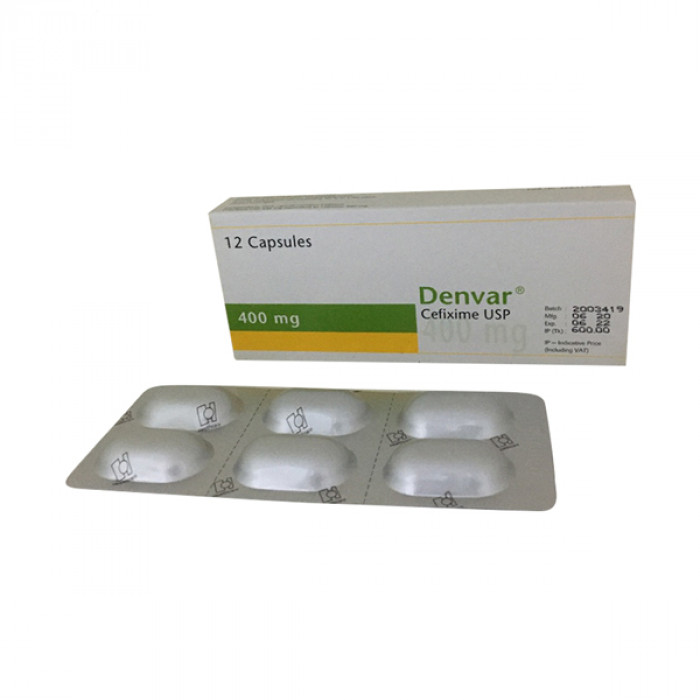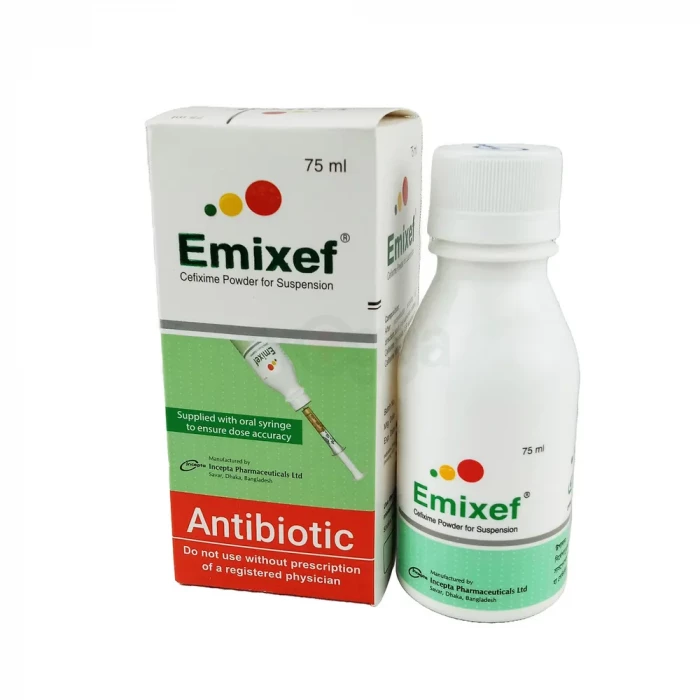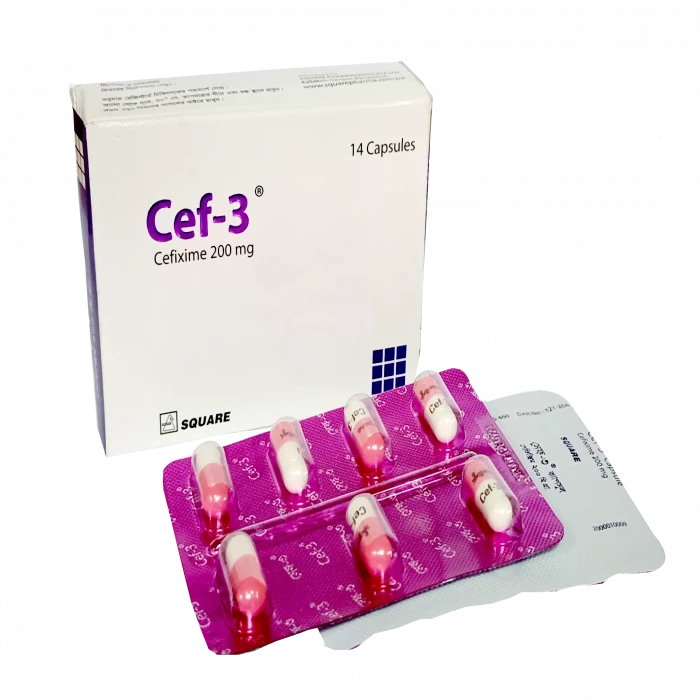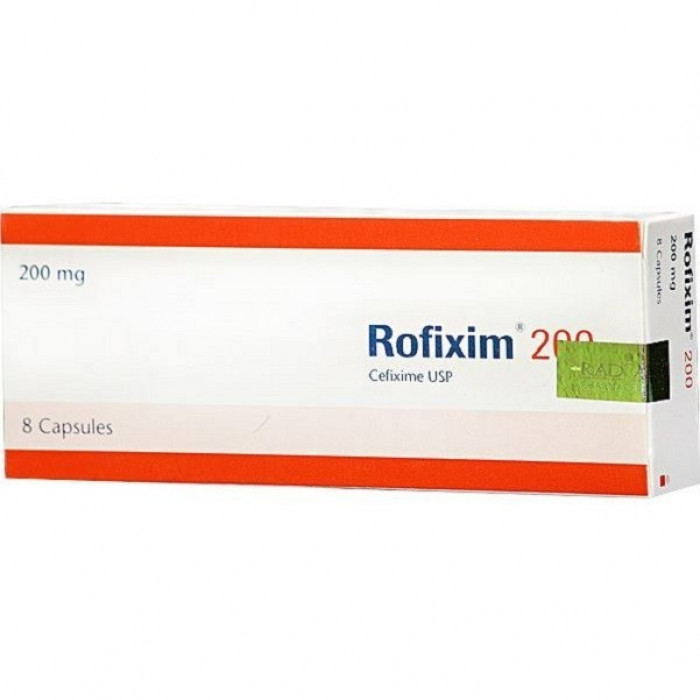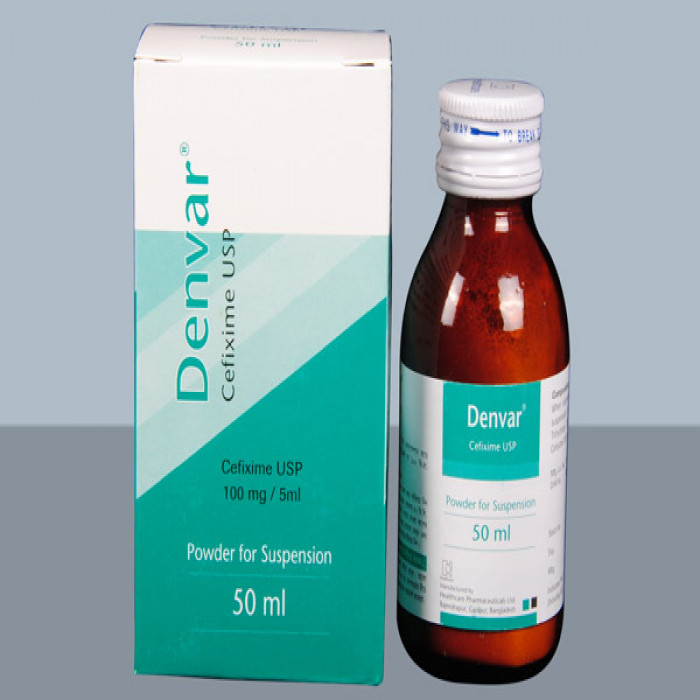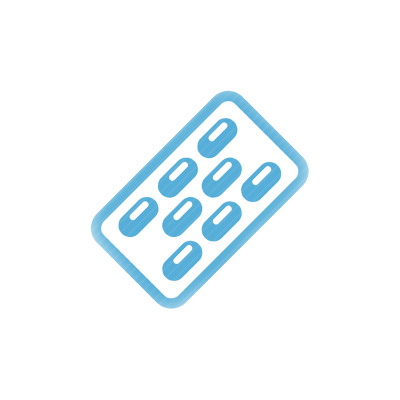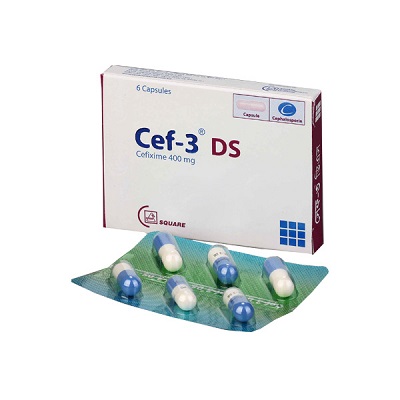
✔ 100% Authentic Product
👁️ Currently Viewing 7494
Cef-3 DS 400mg Capsule 14pcs
Generic Name: Cefixime Trihydrate 400mg
Manufacturer: Square Pharmaceuticals Ltd.
Discount
Price: ৳ 798
MRP:
৳
840
5%
Off

100% Genuine Products, Guaranteed

Safe & Secure Payments, Always

Fast, Secure & Efficient Delivery

Proper Packaging
 Cash on Delivery - All over Bangladesh
Cash on Delivery - All over Bangladesh Regular Delivery - 12-24 Hours, Dhaka City* Charge Tk.39-59
Regular Delivery - 12-24 Hours, Dhaka City* Charge Tk.39-59 Regular Delivery - 24-48 Hours, Other Cities* Charge Tk.99-110
Regular Delivery - 24-48 Hours, Other Cities* Charge Tk.99-110
 ফ্রি ডেলিভারিঃ - ৯৯৯ টাকা+ অর্ডারে, ঢাকা
শহরে
ফ্রি ডেলিভারিঃ - ৯৯৯ টাকা+ অর্ডারে, ঢাকা
শহরে ফ্রি ডেলিভারিঃ - ২৯৯৯ টাকা+ অর্ডারে, ঢাকার
বাহিরে
ফ্রি ডেলিভারিঃ - ২৯৯৯ টাকা+ অর্ডারে, ঢাকার
বাহিরে
100% Genuine Products, Guaranteed
Safe & Secure Payments, Always
Fast, Secure & Efficient Delivery
Proper Packaging
 Cash on Delivery - All over Bangladesh
Cash on Delivery - All over Bangladesh Regular Delivery - 12-24 Hours, Dhaka City* Charge Tk.39-59
Regular Delivery - 12-24 Hours, Dhaka City* Charge Tk.39-59 Regular Delivery - 24-48 Hours, Other Cities* Charge Tk.99-110
Regular Delivery - 24-48 Hours, Other Cities* Charge Tk.99-110 ফ্রি ডেলিভারিঃ - ৯৯৯ টাকা+ অর্ডারে, ঢাকা
শহরে
ফ্রি ডেলিভারিঃ - ৯৯৯ টাকা+ অর্ডারে, ঢাকা
শহরে ফ্রি ডেলিভারিঃ - ২৯৯৯ টাকা+ অর্ডারে, ঢাকার
বাহিরে
ফ্রি ডেলিভারিঃ - ২৯৯৯ টাকা+ অর্ডারে, ঢাকার
বাহিরে
✅ Description:
Indications
Upper and lower respiratory tract infections, Urinary tract infections, Gonococcal urethritis, Acute otitis media.
Pharmacology
Cefixime is a third-era semisynthetic cephalosporin anti-infection for the oral organization. It is bactericidal against an expansive range of gram-positive and gram-negative microorganisms at an effectively feasible plasma focus. It kills microbes by meddling in the combination of bacterial cell dividers. It is profoundly steady within the sight of the Beta-lactamase chemical. Accordingly, numerous life forms impervious to penicillin and some cephalosporins because of the presence of beta-lactamases, might be powerless to Cefixime. Retention of it is about 40% to half whether directed with or without food.
Dosage & Administration
The typical treatment period is seven days. Depending on the severity of the infection, this can be done for up to 14 days.
Adults and children over the age of 12: The recommended should take 200-400 mg (1 to 2 capsules) every day, either in one dose or in two divided doses. A single oral dose of Cefixime 400 mg is suggested for the treatment of uncomplicated cervical/urethral gonococcal infections.
Children (6 months or older): Usually 8 mg/kg/day given as a single dose or in two divided doses or may be given as follows
½-1 year: 75 mg daily.
1-4 years: 100 mg daily.
5-10 years: 200 mg daily.
11-12 years: 300 mg daily
In typhoid fever, the dosage should be 10 mg/kg/day for 14 days.
Children (under 6 months): Cefixime's safety and efficacy in children less than 6 months have not been established.
Interaction
Carbamazepine: Taking these drugs together raises the carbamazepine level. Concurrent use of warfarin and other anticoagulants raises prothrombin time.
Contraindications
Patients with Known hypersensitive to the cephalosporin group of drugs.
Side Effects
In general, the medication is well tolerated. Diarrhea and stool alterations are the most common adverse effects, which are more typically associated with greater doses. Nausea, abdominal pain, dyspepsia, vomiting, flatulence, headache, and dizziness are some of the other side effects. Rashes, pruritus, urticaria, drug fever, and arthralgia have all been described as allergic reactions. These reactions normally fade away after a while.
Pregnancy & Lactation
However, no suitable and well-controlled studies in pregnant women have been conducted. Because animal reproduction studies do not always predict human response, this medication should only be used during pregnancy if absolutely necessary. Cefixime is not known to be excreted in human milk. When Cefixime is given to a breastfeeding mother, caution should be observed.
Precautions & Warnings
Individuals having a history of gastrointestinal disorders, particularly colitis, should be prescribed with caution. Patients with severe renal impairment, as well as those on continuous ambulatory peritoneal dialysis or hemodialysis, should be given the medicine with caution. Only in severe renal failure (creatinine clearance 20 ml/min) does dosage adjustment become necessary.
Storage Conditions
Keep the temperature below 30°C and keep it away from light and moisture. Keep out of children's reach.
⚠️Disclaimer:
At ePharma, we’re committed to providing accurate and accessible health information. However, all content is intended for informational purposes only and should not replace medical advice from a qualified physician. Please consult your healthcare provider for personalized guidance. We aim to support, not substitute, the doctor-patient relationship.




